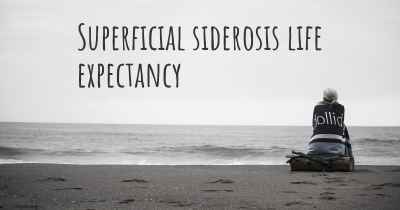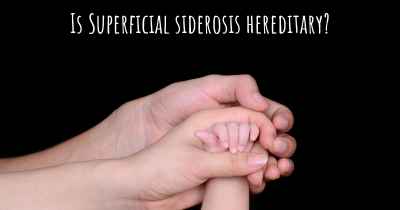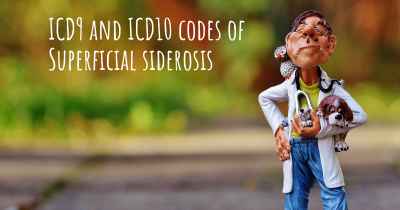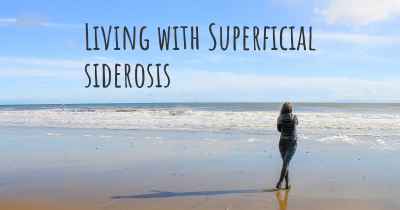Is there any natural treatment for Superficial siderosis?
Are there natural treatment(s) that may improve the quality of life of people with Superficial siderosis? Here you can see if there is any natural remedy and/or treatment that can help people with Superficial siderosis
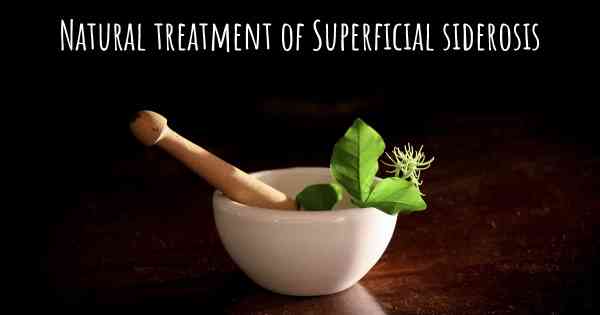
Is there any natural treatment for Superficial Siderosis?
Superficial siderosis is a rare neurological condition characterized by the deposition of iron in the superficial layers of the brain and spinal cord. It is typically caused by chronic bleeding in the subarachnoid space, which can result from various underlying conditions such as recurrent subarachnoid hemorrhage, tumors, or vascular malformations. The iron deposition can lead to progressive damage to the nervous system, causing symptoms such as hearing loss, balance problems, cognitive decline, and neurological deficits.
While there is currently no known cure for superficial siderosis, the treatment primarily focuses on managing the symptoms and preventing further progression of the condition. Medical interventions, such as surgical repair of the underlying cause of bleeding or the use of medications to reduce iron deposition, may be necessary in some cases. However, in addition to conventional treatments, there are also several natural approaches that can potentially help alleviate symptoms and improve overall well-being.
Dietary Modifications
Dietary modifications can play a role in managing superficial siderosis. Certain foods and supplements may have beneficial effects on the nervous system and overall health. While these dietary changes cannot reverse the condition, they may help support the body's natural healing processes and improve quality of life.
1. Antioxidant-rich foods: Including foods high in antioxidants, such as berries, leafy greens, and colorful fruits and vegetables, can help reduce oxidative stress and inflammation in the body. These foods may have neuroprotective properties and support overall brain health.
2. Omega-3 fatty acids: Consuming foods rich in omega-3 fatty acids, such as fatty fish (salmon, mackerel, sardines), flaxseeds, and walnuts, may have anti-inflammatory effects and promote brain health. Omega-3 fatty acids are known for their potential benefits in reducing cognitive decline and supporting neurological function.
3. Vitamin B12: Adequate levels of vitamin B12 are essential for maintaining a healthy nervous system. Including foods rich in vitamin B12, such as fish, meat, eggs, and dairy products, or considering B12 supplements under medical supervision, may be beneficial.
4. Turmeric: Curcumin, the active compound in turmeric, has been studied for its potential neuroprotective effects. Adding turmeric to your diet or considering curcumin supplements may help reduce inflammation and oxidative stress in the brain.
Physical and Mental Well-being
Supporting physical and mental well-being can also be beneficial for individuals with superficial siderosis. These natural approaches focus on improving overall health and managing symptoms associated with the condition.
1. Regular exercise: Engaging in regular physical activity, as tolerated and advised by a healthcare professional, can have numerous benefits. Exercise promotes cardiovascular health, improves blood flow, and enhances overall well-being. It may also help manage symptoms such as balance problems and cognitive decline.
2. Stress management: Chronic stress can exacerbate symptoms and negatively impact overall health. Exploring stress management techniques such as meditation, deep breathing exercises, yoga, or engaging in hobbies and activities that bring joy and relaxation can be helpful.
3. Sleep hygiene: Prioritizing good sleep hygiene is essential for overall health and well-being. Establishing a regular sleep schedule, creating a comfortable sleep environment, and practicing relaxation techniques before bed can improve sleep quality and support the body's natural healing processes.
4. Brain-stimulating activities: Engaging in activities that stimulate the brain, such as puzzles, reading, learning new skills, or playing musical instruments, may help maintain cognitive function and improve overall brain health.
Complementary Therapies
Several complementary therapies may offer additional support for individuals with superficial siderosis. These therapies aim to enhance well-being and promote relaxation.
1. Acupuncture: Acupuncture, a traditional Chinese medicine practice, involves the insertion of thin needles into specific points on the body. It is believed to help restore the flow of energy and promote healing. Acupuncture may help manage symptoms such as pain, balance problems, and neurological deficits.
2. Massage therapy: Massage therapy can help promote relaxation, reduce muscle tension, and improve circulation. It may provide relief from symptoms such as muscle stiffness, pain, and stress.
3. Mind-body techniques: Practices such as yoga, tai chi, and qigong combine physical movement, breath control, and meditation. These techniques can help improve balance, reduce stress, and promote overall well-being.
It is important to note that while these natural approaches may offer potential benefits, they should not replace medical advice or conventional treatments. Superficial siderosis is a complex condition that requires proper medical management and monitoring. Consulting with a healthcare professional experienced in treating neurological conditions is essential to develop an individualized treatment plan.
